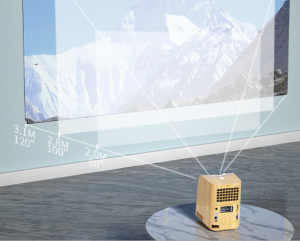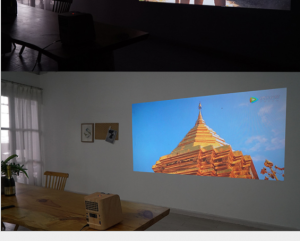Projectors are becoming more and more common in our lives. With the advancement of technology and the improvement of living standards, the projector has entered our lives. The lens can be said to be an extremely important part of the projector, so let’s take a look at the projector lens together.
Projector lens you should know this knowledge
For the lens, in addition to the difference in quality, the key parameter is the size of the aperture f-number, f is the light transmission rate of the lens. The larger the aperture f (the smaller the f-number), the greater the light transmittance of the lens. The aperture of the projector lens is expressed by a numerical value, generally from 1.6 to 4.0. The large aperture of each lens is marked in front of the lens with a numerical value. What I want to explain here is that the f-number of the lens can reach 1.0 in an ideal state. Due to the constraints of manufacturing technology and price factors, the f-number can never be 1.0.
For the projector, the lens is a link in the optical path of the projector. The quality of the lens and whether the aperture value can be made small is directly related to the brightness. The size of the aperture is inversely proportional to the f-number. The smaller the aperture, the larger the aperture. The brightness of the projected image is high. For a fixed focus lens, the aperture value is a constant value. For a zoom lens, through the definition of the f value (the f value can be simply understood as the ratio of the focal length of the lens to the diameter of the optical lens). It can be seen that due to the change of focal length, its value is within a range. For example, f2.8-f3.4. The aperture value of the projector is a very important parameter. For example, if the same machine uses lenses with different f-numbers, the difference in brightness is very large! For example, a projector with f2.8 is the same as a projector with f4. Two times, four times the brightness of the f5.6 projector, and eight times the brightness of the f8 projector…Any two lenses, as long as their f-values are the same, the amount of light they transmit is exactly the same. For example, if two different lenses are both f/2.8, then the same amount of light will pass through the lens to the screen. It is not necessary that the projector lens is large, its f-number is large, and it is closely related to the focal length of the lens! It is possible that the f-number of a small-caliber projector lens is smaller than the f-number of a large lens. Bigger).









